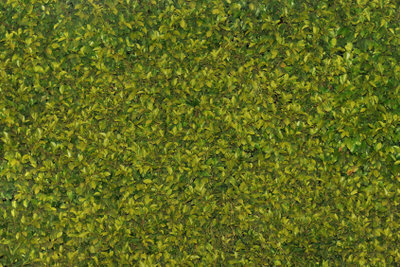Ligustrum vulgare "Atrovirens"
It is certainly known that privet is particularly suitable as a hedge, but that the plant genus can be divided into different varieties, such as B. Ligustrum vulgare "Atrovirens", Ligustrum ovalifolium, Ligustrum compactum, Chinese privet, common privet and many others may not be as well known. Like all privet species, the Ligustrum vulgare "Atrovirens" belongs to the genus of olive trees that is very easy to care for.

The Ligustrum vulgare "Atrovirens" is undemanding
- The Ligustrum vulgare "Atrovirens" is, like all privet varieties, very undemanding, because it has truly earned the name "Multitalent". Not only is it ideally suited as a hedge, it is also often used as a slope vegetation with dense roots, for attachment.
- Among all privet varieties, the Ligustrum vulgare "Atrovirens" is particularly suitable as a hedge plant because it a radical cut back rarely matters and it is very straight up and uncut up to 4 m high grows. It usually carries its leaves well through mild winters through to spring. Leaves can only be lost through transplanting, but this will build up again in spring.
- Even if the Ligustrum vulgare "Atrovirens", like all of its conspecifics, is poisonous, many still enjoy it insects and birds to the shrubs offering protection and the nectar-giving flowers and Berrythat are a treat for birds. In winter it can happen that the leaf color takes on a reddish brown shade as a result of the sunlight.
- Whether as Privacy screen or as a hedge plant, the Ligustrum vulgare "Atrovirens" is particularly suitable for hedges with a size between 40-100 or 120 cm. You should also choose Ligustrum vulgare "Atrovirens" for shaped cuts, because it is much easier to cut than, for example, the "Common Privet". This even makes it possible to use the Ligustrum vulgare "Atrovirens" as a solitary plant or Ornamental shrub to put.
There is a lot you should know about hedges
- Hedges are planted in gardens as a protective function in order to avoid the annoying glances of fellow citizens To protect children and pets from streets bordering the garden and dangers or to create a quiet area create. The wonderful side effect is that they simultaneously fulfill numerous ecological tasks, for example by compensating for temperature fluctuations.
Maintain hedges properly
A hedge is an ideal privacy screen and ensures good air in the garden. Maintain ...
- Many small organisms need the high humidity within the branches and the resulting dew formation. It should not be forgotten that hedges interrupt the wind and thus also serve as dust and silencers. With their leafy foliage, hedges clean the air by producing oxygen and also offer many species of birds and other animals sufficient protection for life and breeding.
- Of course, a privacy screen or a garden border can also be made of wood, stone or wire mesh, but one that is so natural, inexpensive and ecologically valuable fencing, as guaranteed by a hedge, cannot be achieved with any other material. There are three different uses for hedges in a garden.
- Flowerbed areas with low growing areas can be created within a garden Hedge plantssuch as B. to the Boxwood, some ferns or lavender very nicely, which are then only held up to a height of 30 or 40 cm. And for hedges that z. B. to delimit a quiet zone and grow between 40 - 100 cm high, especially the Ligustrum vulgare "Atrovirens", Berberis thunbergii Atropurpurea and the hornbeams (Carpinus betulus) agree.
- Hedges with a height between 100 - 200 cm should always be chosen as the boundary of an entire garden. Privet species, barberry and field maple are ideal even for these sizes. However, for such a stately hedge one should perhaps choose the most beautiful of all deciduous hedge plants: The Hornbeam.
Take proper care of the Ligustrum vulgare "Atrovirens"
- The Ligustrum vulgare "Atrovirens" thrives quite undemanding in many locations, whereby sunny and partially shaded locations are preferred. If you want to plant bare-root Ligustrum vulgare "Atrovirens", you can also plant them from March to May or September to December like bales. The advantage of the bare-root Ligustrum vulgare is that, wrapped in damp earth or cloth, you can store it in a cool, shady place for a few days.
- Make sure that the soil is well loosened and covered with humus and compost is undermined. It should be dry to moist and not have any waterlogging. Dig the planting hole about 40-50 cm wide and 30 cm deep and plant about 4-5 plants per meter. Loosen the lower soil again after digging. It is advisable to water the plants on the root again before using them. It is best to form a "pouring edge" after planting.
- After planting, cut back bare roots to 1/3 and root ball plants only at the tips. In the following years you should trim the hedge in a trapezoidal shape and with organic in the spring and autumn fertilizer supply.
How helpful do you find this article?


